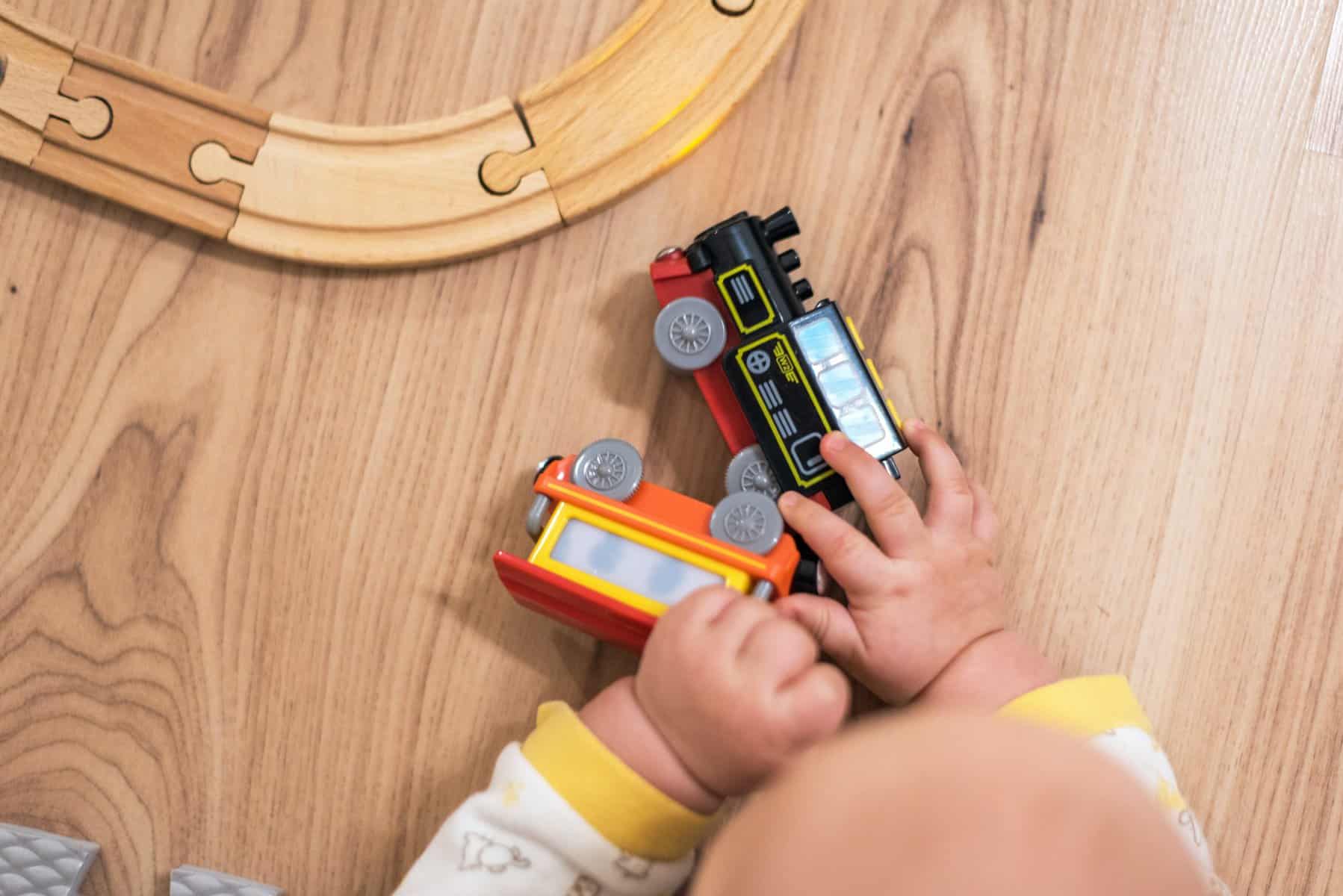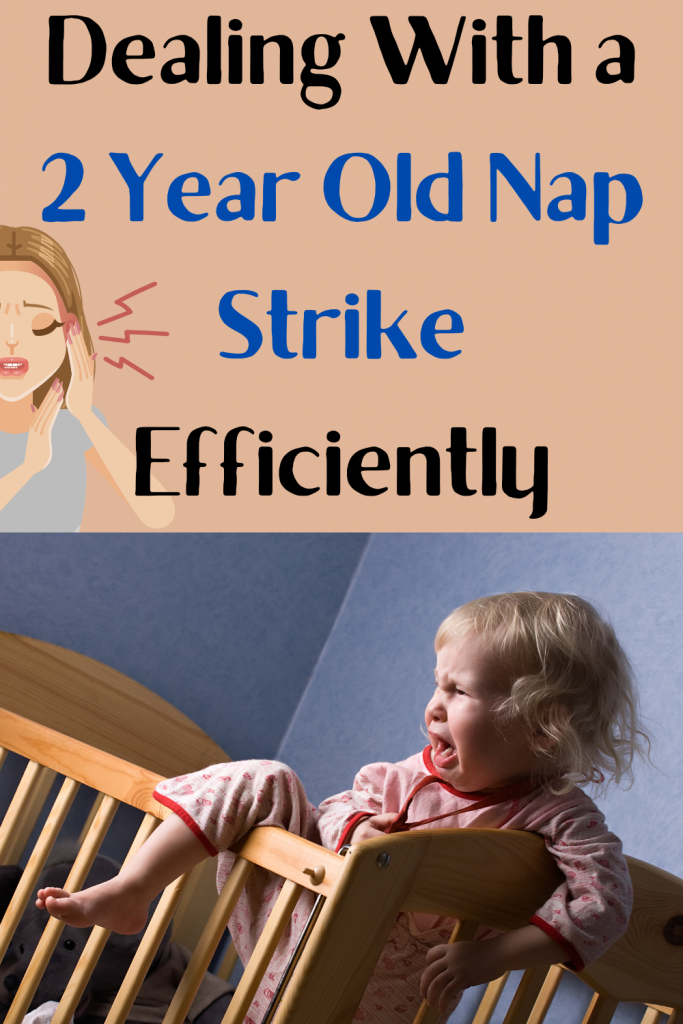Losing your mind because your precious little angel suddenly started its 2 year old nap strike? Well, you’re not the first parent looking for answers or pulling out their hair. Naptime poses a tricky challenge for parents to overcome.
Luckily, we’re here to help.
First, understand that it’s normal for toddlers to skip naps.
In other words, there’s nothing wrong with your baby. It may seem worrying, because they used to skip a few naps every once in a while, but now your baby is resisting them. This period, therefore, requires a great deal of patience.
Above all else, it requires consistency.
We’ll get into the details momentarily, but for now we want you to know that sleep regression is common. With a little effort and planning on your end, you can work around your 2 year old’s nap strike and still enjoy downtime.
Yes, it can be frustrating.
Yes, you’re allowed to feel frustrated.
However, it’s composure that makes the difference.
Do your best to stay calm and composed as we work together to figure out parenting strategies that can help you get through your 2 year old’s nap strike.
What to Do When Your 2 Year Old Goes on a Nap Strike?

Well, the obvious move is to panic, right?
It’s not as scary as it looks. Most parents go through this struggle.
When your 2 year old starts their nap strike, you don’t have to change much. You don’t have to resort to clever tactics and try to outwit your baby. In fact, it’s proven that staying consistent to the baby’s schedule is most efficient.
What does that mean? It means sticking to the regular schedule.
If you’re going to make any changes to your baby’s routine, it’s important to introduce them gradually, because your baby needs time to adjust.
You don’t want to overwhelm them in your desire to bring back naptime. If you want to solve your baby’s sleep regression, start by teaching yourself how to be patient and how to stay composed when your little angle is refusing to nap.
Your baby’s learning how to make decisions.
With that freedom, however, they also learn that they can say no to things such as naps. Fortunately, you can get them back on track and still enjoy well earned naptime throughout the day. Here’s what you need to know.
Naturally, you can’t force your baby to sleep if they refuse.
It’s like trying to fight fire with fire.
However, one thing that you can do is change naptime into quiet time.
That way your 2 year old’s nap strike becomes a quiet, insightful and relaxing period of the day. Instead of trying to force them to fall asleep, tell them to recharge their batteries. Play some calm music and dim the lights, as well.
Think of it this way: the more you force your baby to nap, the less they want to. You wouldn’t like someone telling you to nap when you’re not exactly feeling like napping, would you? So, make sure to provide alternatives, instead.
7 Parenting Strategies to Help Your Child Get the Sleep They Need

Every parent can share some crucial insight about how they resolved their 2 year old’s nap strike, but we’ve taken the liberty to organize a comprehensive guide that offers various parenting strategies that you can safely try at home.
Depending on the baby, some of these strategies work better than others. After all, every child is different. We advise trying them all out and observing your baby carefully, studying how they react in order to find the best solution.
1. Stop Calling It Naptime

Naptime sounds boring to kids.
With so much energy at their fingertips, babies usually fall asleep only when they’re tired. However, toddlers experience sleep regression when they are overtired. As such, it’s better for babies to sleep earlier rather than later.
What about naps?
Well, when the nap strike period begins for a 2 year old, they disrupt their routine. It’s your responsibility to stay consistent with their sleep schedule.
But, what can you do when they actively resist naps?
Try not calling it naptime. While adults try to get as much sleep as possible, babies seem to avoid it. So, what if you called it relax time, instead?
Suddenly your baby’s perception shifts, because it’s something new.
Stick to the schedule, but don’t force your baby to fall asleep. Instead, provide all the lulling comfort in the world for them. Get some super relaxing music going and make sure to dim the lights. Prepare everything for naptime.
Just don’t call it that. It’s time for your baby to relax.
2. Get Rid of Distractions

By distractions, we mean loud or colorful toys.
We also mean shutting the blinds and turning off the TV.
You don’t want anything drawing your toddler’s attention.
You can be present yourself, but make sure that the aura you radiate is calm and reassuring. Babies feel our energy. So, you have to make sure that they feed off your tranquility as you work to restore their healthy sleep schedule.
That means staying calm even if your baby isn’t going to sleep.
You want to make sure that everything in the room works in your favor, including yourself, with one sole purpose of helping the baby fall asleep.
Even if your 2 year old is refusing to nap, it’s still a calm and harmonious time for them to relax and to recharge their cute little batteries, all on schedule.
3. Story Time

When your 2 year old goes on a nap strike, it all comes down to providing an opportunity for sleep, rather than forcing them to do what they resist.
That way you’re cultivating their newfound independence.
You’re giving your baby the option to choose.
However, helping them fall asleep still remains your end goal.
That’s where books come in. Reading to your toddler is not only a relaxing experience for them, but an educational one, as well. By reading stories, you’re sharpening their mind and helping them develop their thinking muscles.
In fact, reading should be done often, due to its many benefits.
When you’re fighting against your 2 year old’s nap strike, we advise reading in a calm, soothing and rhythmical voice. Ideally, your voice should try to mimic a lullaby, enabling them to fall asleep while also stimulating their creativity.
No matter the result, this proves a beneficial practice in your baby’s life.
Make it a habit.
4. Consistency Is Key

First of all, be consistent with wake up time and sleep time.
Even if your baby skips naptime, stay consistent. Try again tomorrow.
When you secure consistency, it’s only a matter of time before the baby adapts to your regular schedule. Naturally, you don’t have to keep tabs right down the last second, but it helps to have a fixed time for your baby’s bedtime.
What if your baby skips naptime completely?
Yes, you may feel tempted to move sleep time earlier, but that only further disbalances your baby’s routine. You may feel as if you want to wake them up earlier in order to make room for naptime, but that should also be avoided.
A fixed schedule and the right strategies can solve your 2 year old’s nap strike.
5. Stay Calm & Be Patient

As mentioned earlier, your toddler feeds off your energies.
When your child makes a fuss about falling asleep, if you get frustrated, it only fans the flames. So, make sure to always react in a composed manner.
Keep your voice down. No yelling. You have to understand that your toddler is developing decision-making skills. Yes, they’re also making you pull out your hair, but if you remain still, that energy radiates and helps calm them down.
As it’s always the case with kids, some lessons we teach, some lessons we learn. In this case, you have to learn the lessons of composure and patience.
Understanding why your 2 year old is having a nap strike helps you get to the bottom of the issue and work efficiently to find quick and reasonable solutions.
Stick to the schedule and give it time. Be patient.
6. Lie Down Next To Your Baby

A child feels safe with its parents. Safety leads to comfort.
Comfort inevitably leads to sleep.
If you want to help your toddler fall asleep, try lying down next to them. Of course, you can only do this if there’s enough room and if your baby isn’t sleeping in a crib. You need a spacious bed with enough room for both.
However, we advise not doing this too often.
As with all things in life, it should be done in moderation.
Your baby may start developing codependency, which then leads to separation anxiety. They need to learn to sleep on their own from a young age so as to be able to face their fear of the dark without skin-to-skin contact.
Yet, from time to time, it’s completely harmless and even beneficial.
Lying down next to your toddler and speaking to them gently during naptime calms them down and helps them fall asleep. But, even if they stay awake, it’s a great practice that recharges both the baby’s and the parent’s batteries.
7. Change the Location

Every child wants attention, especially from their parents.
By now, they understand the day and night cycle. What they also understand is the fact that days are full of fun activities, while the nights are for sleeping.
It’s quite possible that your toddler has a fear of missing out.
Many parents have resolved their 2 year old’s nap strike by simply changing the location where they nap. For example, if your baby naps in a different room, they now may have a hard time napping because everyone’s doing something.
If everyone is doing something, why should babies go to sleep?
By changing the location and keeping them in the same room while you do your chores might have a positive effect and help them go to sleep during daytime.
Learning the Difference Between Nap Strikes and Sleep Regression

Sleep regression implies a sudden and unexpected disruption to your baby’s sleep schedule. A nap strike, on the other hand, implies your 2 year old’s desire to test your boundaries as they form and develop their individuality.
Therefore, sleep regression occurs for different reasons.
For example, babies experience sleep regression due to illness, teething and developmental changes, which means that there’s an underlying issue.
Understanding the difference is key.
If your toddler is refusing to nap in a sort of conscious protest, then it’s likely a nap strike that has nothing to do with sleep regression. Sleep regression disrupts not only naptime, but the baby’s nighttime schedule, as well.
That makes it a little bit more complicated.
If you’re here, it means we’re dealing with nap strikes. However, even if your child experiences sleep regression, know that it’s only temporary. Stick to your schedule and use the advice provided to ensure quality sleep for your baby.
Understanding Why Your Toddler Is Suddenly Anti-napping

When your 2 year old goes on a nap strike, you’re not supposed to prevent them, to have them take naps by force, because it defeats the purpose.
You see, right now your child is developing expeditiously.
Words are no longer sounds. They convey meaning. During this time, it’s safe to assume that your toddler is no longer babbling randomly, but putting sounds together in a way that’s not exactly Shakespeare, but talking nonetheless.
They’re able to understand, interpret and speak certain words.
Also, they’re beginning to discover their individuality, their freedom.
What does that mean? It means that they can make choices. One of those choices, as unfortunate as it is for parents, happens to be a nap strike.
Your child is learning that they can refuse to sleep if they don’t want to.
That’s an important discovery and it should be rewarded, rather than punished. Understanding that helps you reorganize your approach when it comes to naptime and your baby’s sleep schedule in general. You have to get creative.
Yet, it’s a fine line that parents have to walk.
You don’t want your child to be completely rebellious. You have to maintain boundaries. With the advice provided above, it’s certain that you will find a way to cultivate your child’s growth without harming their delicate sleep schedule.
So, How Long Do Nap Strikes Last?

Well, it varies.
We can’t say for certain, because every child reacts differently.
However, it’s likely that your patience will be tested. As such, assume that you will have to stay consistent with your new routines for at least two weeks.
It may take less or it may take more.
It’s also quite possible and should be expected that your toddler’s sleep schedule may oscillate and change rapidly in the following months. So, be ready for anything. Be flexible. It’s up to you to keep things organized.
It’s important that you learn how to identify your 2 year old’s nap strikes and sleep regressions, because eventually your child has to drop naps altogether.
However, don’t expect your toddler to stop napping until they’re at least 3.
It also helps to know that toddlers between the age of 1 and 3 usually sleep between 11 to 14 hours a day. With all that time, you’d think that parents actually get some rest, but there’s no shortage of responsibility quite yet.
Expect many nap strikes and regressions and plan accordingly.
How Can You Know if Your Child Is Ready to Drop Naps?

Most of the time, kids stop napping naturally.
When should you expect it to happen?
Usually, children start skipping naps somewhere between the ages 3 and 5. However, it’s not unusual for younger toddlers to drop napping, as well.
So, like most things when it comes to kids, it varies from one to the next.
Yet, there are signs that you can observe that prompt you into making a rational decision to readjust your child’s sleep schedule and drop napping completely.
When your toddler turns 3, you may notice that it’s getting harder and harder for them to fall asleep during naptime. This differs from a 2 year old’s nap strike because they’re not actively testing you, but simply finding it harder to sleep.
There’s nothing wrong with your child. They’re just outgrowing it.
With so much energy to spare, it’s no wonder that they want to stay awake.
Ideally, you want your toddler to be tired, but not overtired, when it’s time to go to bed. You want them to fall asleep easily. However, by the age of 3, napping recharges their batteries to the point where they don’t get tired enough.
On top of that, if your toddler is getting up earlier in the morning than usual, it might be a telltale sign that they weren’t all that exhausted the day before.
When you decide to exclude naptime, observe your child.
Are they tired? Are they yawning throughout the day?
If they have enough energy to last them the day, you’ve made the right choice.
In Conclusion

We know how frustrating a 2 year old’s nap strike can be.
Every parent experiences it to a degree. It’s a phase that comes and goes, but one that you have to monitor to ensure the best sleep schedule for your child.
Don’t let it drive you crazy. Stay composed. Be patient.
Your child looks up to you. Your coolness affects them.
With the guidance provided in the text above, you have all the tools, resources and parenting strategies you need to help you stay on top of things.
However, it’s important that you remember that every child reacts and behaves differently. You have to observe your child and draw conclusions yourself.
Some of our advice may work, while some of it may fail.
Persist. You’re bound to find a way to help you deal with your toddler’s nap strikes and to make sure that they enjoy a functional sleep schedule.
Yes, it’s going to take time, but that’s a lesson that having a child teaches well.
After all, a parent learns and grows no less than their child.

Mother of three and a primary school teacher. I’ve always loved being around children and helping them, so I chose my path as a teacher. It is sometimes hectic with three children, but I am 100 percent into it and wouldn’t change it for anything in the world.



To mt tài khon min phí
Thursday 9th of May 2024
Your article helped me a lot, is there any more related content? Thanks!
abrir conta na binance
Friday 9th of February 2024
Thanks for sharing. I read many of your blog posts, cool, your blog is very good. https://accounts.binance.com/pt-BR/register?ref=JHQQKNKN
Ustvarite brezplacen racun
Tuesday 6th of February 2024
I don't think the title of your article matches the content lol. Just kidding, mainly because I had some doubts after reading the article. https://www.binance.info/sl/join?ref=FIHEGIZ8
Practical Gifts For A 2-Year-Old • Mama Bean Parenting
Thursday 26th of January 2023
[…] you’re a parent who’s having problems with a 2-year-old nap strike, learn some efficient ways to deal with […]